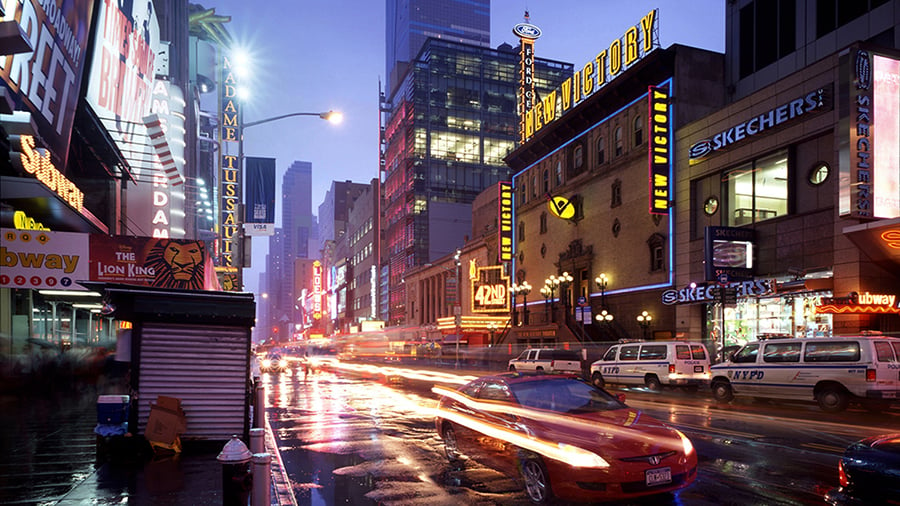
March 31, 2017
Remembering Hugh Hardy
Metropolis president, Eugenie Havemeyer, reflects on the life and work of the architect, who left such a mark on New York City’s cultural scene.
Architect Hugh Hardy, our Metropolis and Exploring the Metropolis (EtM) colleague and personal friend for decades, died earlier this month. He was one of New York’s best, in so many ways – so alive, so talented.
Hugh was widely acclaimed for designing and remodeling performing arts facilities. That’s not how I first met him. In 1973, the National Endowment for the Arts funded research and a national conference on the potential to re-use railroad stations, the extraordinary structures that dotted our transportation landscape. Hugh and his firm, Hardy Holzman Pfeiffer Associates (HHPA), did the research. It led to a major Workshop in Indianapolis in mid 1974, coordinated by Educational Facilities Laboratories; I was Conference Coordinator. Earlier this year, Hugh and I reminisced about “Reusing Railroad Stations.” He said The New Yorker wanted to write it up, and the fact checker called Hugh to say there was no such word as “reusing.” Hugh’s response: “There is now!”
Hugh loved the performing arts, particularly. He was an accomplished amateur pianist/singer. He, through HHPA, was a major player in the 1980s Midtown zoning changes. Their focus was the critical role of the historic Broadway theatres, which New York City Planners and private sector developers wanted to demolish and replace with commercial high rises. The major study authored by Hugh and Jack Goldstein of Save the Theatres revealed what made the Broadway theatres acoustically superior to newer ones. As a result, those 25 theatres were landmarked; the win-win agreement saved these incomparable performance spaces and provides compensation when their unused air rights are sold.
More recently, Hugh/HHPA collaborated with EtM (the nonprofit I founded in 1981 to focus on how NYC’s land use and real estate can support the needs of cultural organizations). In April 2004. EtM/HHPA released “Report on the Feasibility of an Orchestra-based Rehearsal Center in Manhattan” to identify and help solve a key problem: New York’s 11 itinerant orchestras had no affordable, acoustically appropriate, consistently available, well-located studios in which to rehearse. The City’s Department of Cultural Affairs was solidly behind this effort, and three foundations funded the study. The American Symphony Orchestra League (now League of American Orchestras) hosted meetings with representatives of the orchestras. Hugh was integrally involved; his knowledge of and enthusiasm for their professionalism and needs drew in even the skeptical. The resulting report became the vehicle for development of the DiMenna Center for Classical Music, owned and operated by the Orchestra of St. Luke’s, on West 37th Street. Appropriately, HHPA was architect for this essential resource that now serves New York’s orchestras and the breadth of small to large New York-based ensembles and those from elsewhere.
Hugh was New York. We are so grateful for his legacy of studies, renovations and new buildings that enhance our lives.







